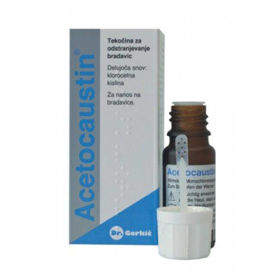Customer question:
What types of growths on the skin do we know? Anonymous customer's question
Pharmacist's answer:
Dermatofibromas
Dermatofibromas are noncancerous formations that must be treated only if they become sensitive, painful, or itchy. They are usually seen on the lower limbs or trunk and are of unknown origin, although they can occur after trauma.
Prurigo nodularis
Prurigo nodularis is a chronic skin disease that classically presents as multiple, firm, fleshy to pink nodules that usually appear on the extensor surfaces of the extremities. The lesions are very itchy and can appear in any age group.
Keratoacanthomas
Keratoacanthomas are low-grade tumors (growths with almost normal cells) that usually appear on the skin with sun-damaged hair. These can increase and cause concern, so they should be examined and treated immediately.
Pyogenic granulomas
Pyogenic granulomas are benign bullae that often appear in children, pregnant women, and patients taking specific medications. These lesions can increase within a few weeks, reaching an average size of one and a half inches, and bleed uncomfortably. It is best to have them examined by a doctor to rule out more serious illnesses. These growths can be treated and often disappear spontaneously in pregnant women after delivery.
Cysts
Cysts (epidermoid, pilar, and others) are abnormal, enlarged pouch-like pockets under the skin that contain various substances, such as air, fluid, pus, and the like. They can appear anywhere on the skin and become sensitive and problematic. Your dermatologist usually treats them.
Milia
Milia occur when tiny skin particles become trapped in small pockets near the skin's surface. They are most often seen on the face of newborns or more mature adults, especially women. Small white spots may take weeks or months to disappear.
Hyperplasia of the sebaceous glands
Sebaceous hyperplasias are benign growths of sebum-producing glands on the face of middle-aged to mature people. Because they can look like basal cell carcinomas, it's essential to get them evaluated by your dermatologist right away.
Digital mucinous pseudocysts
Digital mucinous pseudocysts are noncancerous bumps that can develop on the fingertips and sometimes the toes. They are usually not bothersome but can grow and cause nail problems, so you should see your dermatologist.
Lipomas
Lipomas are usually small growths of fat cells located just under the skin. They are usually rubbery to the touch and can appear at any age but are most common in older adults. They are not cancerous, but since they can grow and become problematic, they should be evaluated by a dermatologist.
Xanthelasma
Xanthelasmas are yellow cholesterol deposits around the eyes that develop in adults, more often in women. Internal cholesterol-related problems can cause them and can become disfigured. Once diagnosed, they can be removed by a dermatologist.
Annexes
Adnexes (syringoma, trichoepithelioma, and others) are generally noncancerous growths found anywhere on the body but often on the face. Adnexal carcinomas can occur, so it is essential to have any unidentified growths evaluated by a dermatologist.
Angiomas
Angiomas are noncancerous spots that can develop anywhere on the body in adulthood. They are caused by excessive growth of capillaries and can occasionally be problematic, so they require treatment by a dermatologist.
Seborrheic keratoses
Seborrheic keratoses are noncancerous growths that usually appear later in life. They can change or become problematic occasionally, so it is essential to have them examined by a specialist dermatologist.
Warts
Warts are small areas that can be pigmented and flesh-colored. They can be on your skin from birth or develop in adulthood. Most warts do not develop into melanoma skin cancer but should be examined annually by a personal dermatologist.
Verrucae Vulgaris
Verrucae Vulgaris or papillomas are common benign epidermal lesions caused by human papillomavirus infection. They can appear anywhere on the body in different muscle morphologies.
Interesting reading: Skin papillomas
Interesting reading: Skin-growth-removal liquid












